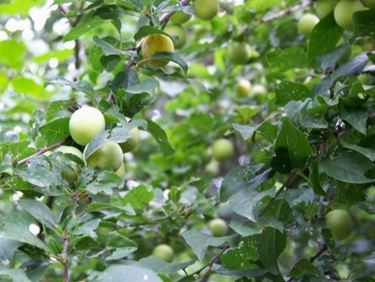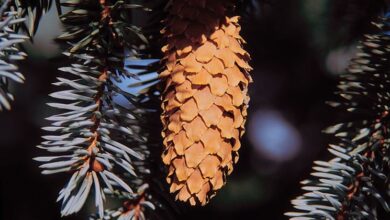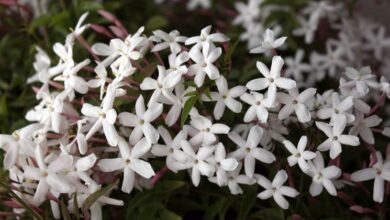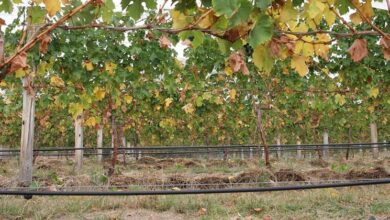Myrobalan and similar – Prunus cerasifera

Generality

Hybrids and similar species
The myrobalan has been crossed with several species belonging to the genus Prunus, the most important hybrid is the biricoccolo or susincocco, obtained from a cross made with the apricot. It is a plant up to 5 m tall. The flowers are small, white-pink and emitted before the leaves; flowering occurs simultaneously with myrobalan and after apricot. This hybrid, unlike myrobalan, is self-sterile, so it needs pollinators. The fruits are round or elliptical drupes and similar in size to those of the myrobalan. The skin is slightly hairy, the pulp adheres to the stone, it is soft, succulent, with a sweet, slightly acidic and aromatic flavor. The stone is long, flat and 30-40% smaller than that of the apricot.
A species similar to myrobalan is the blackthorn (Prunus spinosa), which is a fairly vigorous shrub, up to 3-4 m tall and with a dense and branched crown. The branches are equipped with thorns and the leaves, small and dark green, are emitted after the flowers, which come out from February-March. The fruit is a drupe, similar in size to that of myrobalan, characterized by an astringent flavor due to the presence of tannins; once fully ripe, the fruits become sweet and take on a purplish color. The drupes of the blackthorn, rather than for fresh consumption, are intended for the preparation of jams, spirits and for herbal uses.
Climate and terrain
These species adapt very well to temperate climates, have a good resistance to low winter temperatures, so they can be exposed in full sun and excellent in drought, thanks to the well developed roots. These plants grow well in lowland, hilly and windy environments, in the latter case it is good practice to secure the young specimens to solid stakes. In terms of soil, myrobalan is extremely adaptable, in fact it is able to grow on humid, clayey, heavy, asphyxiated, stony and calcareous soils, however it prefers fresh, deep and well-drained soils. The myrobalan originates from the Balkan peninsula and is also called rusticano thanks to its adaptability, while the blackthorn grows spontaneously in our country.
Variety
The cultivars of myrobalan present in Italy are cultivated for ornamental purposes and are distinguished from each other mainly by the color of the leaves, green or red, and of the flowers, white or pale pink.
Among the varieties with purplish-red leaves and pink flowers we remember Pissardii, Nigra and Thundercloud; by combining cultivars with light or dark green leaves to those just mentioned, a pleasant chromatic contrast is created in the gardens. Regarding the biricoccolo, the fruit varieties, yellow with red blush, destined for fresh consumption locally are the Grossa Precoce, which ripens from mid-June to mid-July in the north and in the first half of June in the center, and the Pruna Cresammola , grown in the Vesuvius area, has a smaller drupe than the previous one and is harvested in the second half of June.




